When you’re running a small service business, there is little worse than losing a customer due to pricing.
You and your team worked so hard to get them to this point, and now they’re abandoning you because they dislike the payment options.
One of the best ways to prevent this unfortunate loss is by offering customer payment plans. They’re great at turning the sour face of a buyer experiencing price shock into one of delight.
In this guide, we’ll tell you why and how to offer payment plans, as well as some common risks and potential costs associated with them.
- What Are Customer Payment Plans
- Why Should You Offer Customer Payment Plans
- What Are the Risks of Offering Payment Plans
- What Costs Should You Take Into Consideration
- How to Offer Payment Plans to Customers
- How to Provide a Great Payment Plan Experience
- What to Do if a Customer Misses a Payment
- Conclusion
What Are Customer Payment Plans
Customer payment plans are payment agreements that detail when and how a customer will pay for a service.
Typically, these plans split the total cost of a service into multiple smaller payments that customers pay over the course of several weeks or months—or, if the cost is high enough, years.
Payment plans help you close more deals and reduce cart abandonment caused by the high total cost of payment:
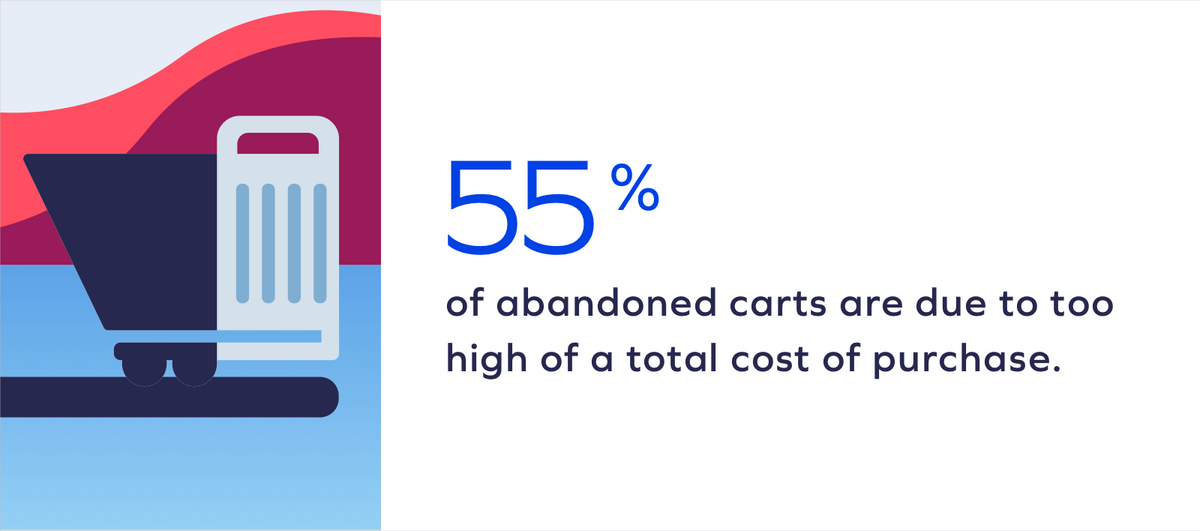
Source: Yotpo
For example, if a summer camp costs $5,000, the business might offer a payment plan where the parent pays $1,000 per month for five months on the 26th of each month.
This is much easier to manage for the parent.
In addition to that plan, the summer camp might also offer another plan that’s two installments.
There’s really no limit to the number of customer payment plans you can offer.
A small business with only a few large customers at any given time might even offer individualized plans to each customer.
Of course, for most businesses, this level of personalization is unfeasible and only an option if it’s a big customer that isn’t satisfied with the available payment options.
To avoid confusion, the majority of businesses create just a couple of payment plans and then list them as options on their checkout page or sales contract.
For example, this business offers three different payment plans:
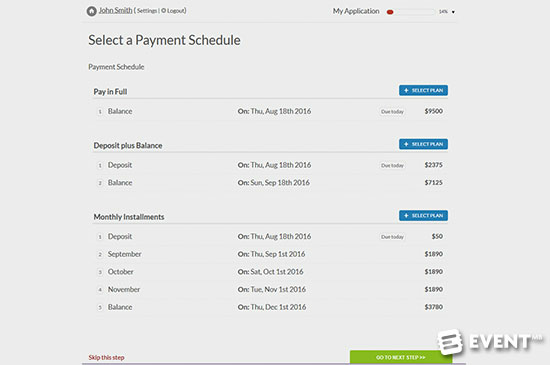
Source: Regpack
The options are to pay in full, to pay a small deposit and a balance, and, lastly, to pay a small deposit and then four equal, larger installments over five months.
Note that each payment includes a due date and an amount. Customers should see these before agreeing to a plan so they know exactly what they’re signing up for.
In most cases, service businesses will give buyers the option to sign up for autopay so that the customer’s card or payment method is charged automatically when a payment is due.
Why Should You Offer Customer Payment Plans
Customer payment plans streamline the buying process and win more customers by making it easier for buyers to agree to the purchase.
Instead of mulling over (and perhaps dreading) the repercussions of forking over $5000 in one swift move, that customer can choose a different payment plan that works for their budget and timeline.
This makes them more likely to click purchase.
It’s worth noting that today’s buyers, who have grown to expect multiple payment options, will love the flexibility of payment plans.
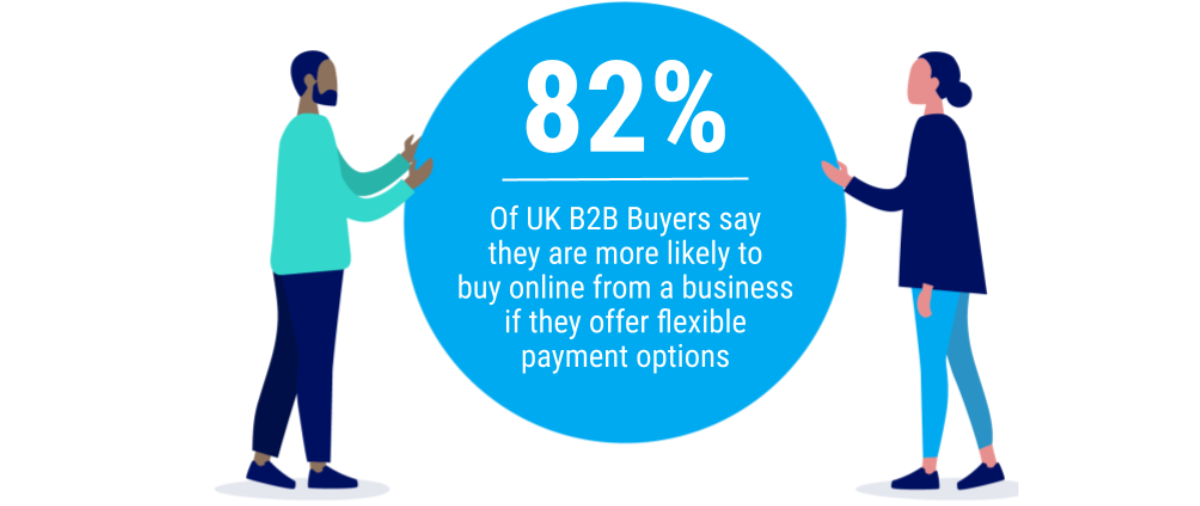
Source: Kriya
They’ll reward your business for this thoughtful offering with their ongoing status as a loyal customer.
Plus, their affection for your brand will also make them more amenable to upsells and cross-sells that help you boost your revenue.
On another note, many customer payment plans will allow you to reap the benefits of accepting recurring payments.
For example, by charging customers at set intervals over the long haul, you create predictable revenue, which makes it easy to predict and manage your business’s cash flow.
And, with 82% of small businesses failing due to cash flow mismanagement, that’s a perk worth celebrating:

Source: America’s SBDC
Overall, customer payment plans help you enhance the customer experience, increase sales, and capture those customers who, if not for the payment plan, wouldn’t have been able to afford your service.
They’re also a great way to stand out from the competition, who might be too afraid of the risks of payment plans to offer them.
But as long as you know and prepare for the risks, you have nothing to worry about. That said, it makes sense to go over them briefly.
What Are the Risks of Offering Payment Plans
The two main risks of offering payment plans are that 1) customers forget to pay their installments (or choose to ignore them), or 2) payments may fail accidentally (e.g., if a customer’s card on file is no longer active).
In both these cases, your team will have to chase down customers and get them to pay the money or update their card information in the system.
This can be a huge time sink for your staff.
For example, a buyer’s credit card might fail, and the buyer might not respond for weeks to the late payment emails your team sends.
If you were relying on their funds to run your operation, then this small hiccup in payment collection would cause some serious damage.
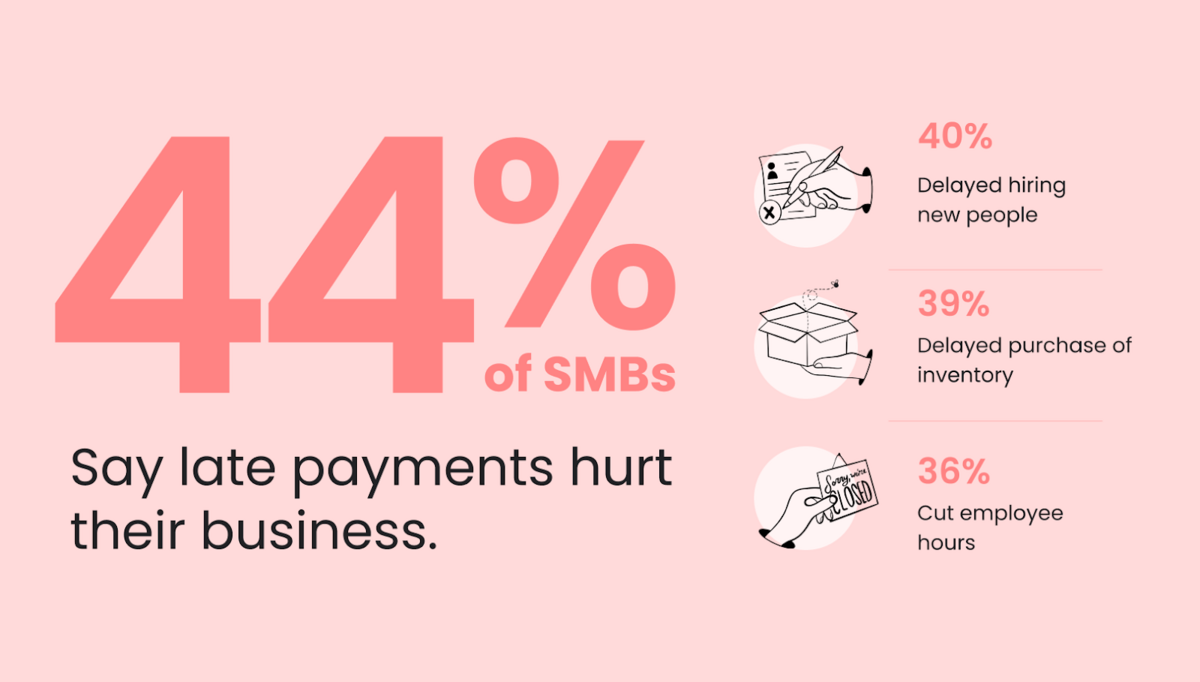
Source: Melio Payments
This chance of payment failure is one of the main reasons why some businesses still want their customers to pay in full upfront.
But, it’s often not the best choice, as these risks can be mitigated or avoided entirely.
How to Protect Against Payment Plan Risks
The best guard against buyers abusing your flexibility is to vet them in person or over the phone and ensure that they’re trustworthy and responsible.
Of course, this is easier said than done, and more possible for service businesses with a small number of customers they speak with in person before a purchase occurs.
Companies with large customer bases who sign customers through self-checkout will have a slightly harder time doing this.
Another way to protect against late or forgotten payments is to use some sort of recurring billing software with built-in features meant to ensure you get the money you’re owed.
For example, some tools offer features like automated payment reminders, automatic payment retries, and automatic late payment emails, like the one below:
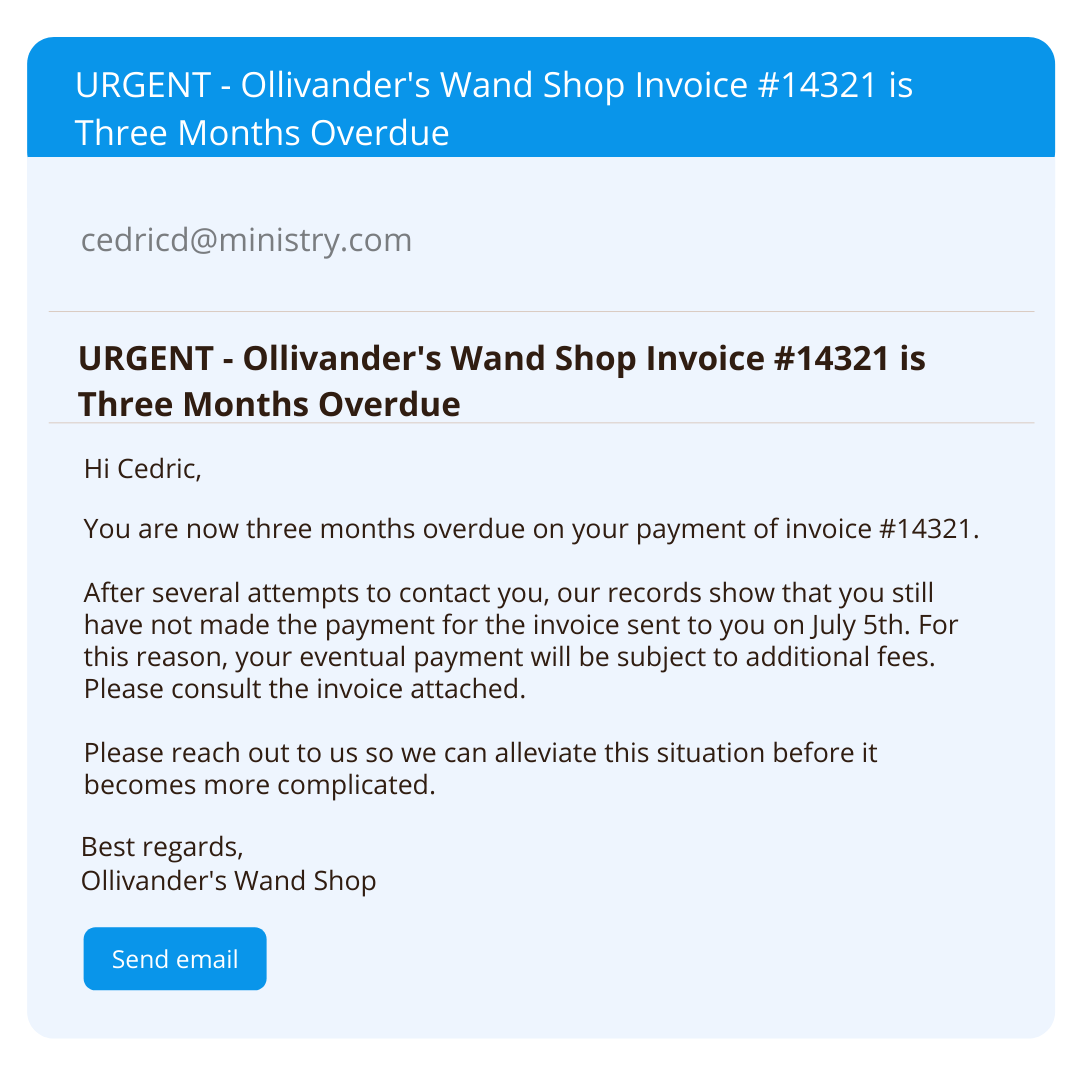
Source: Regpack
Further, most platforms will allow you to offer customers an autopay option, which will charge them automatically, thus completely eliminating the chances of risk #1, the customer forgetting to pay you.
Another option is to include a clear late fee in your payment policy. This cost will dissuade people from missing their payments.
They’ll be more likely to set their own reminders and take action to keep themselves from forgetting.
Later on, we’ll go more into how to properly implement these payment plans. First, let’s go over some potential costs to consider.
What Costs Should You Take Into Consideration
The first cost will likely come from tools and software that help you manage your payment plans and offer them online at checkout.
One of the most common types is online payment software, which offers things like a payment gateway, payment plan templates, automatic payment invoices, and a bunch of other features that make offering these plans a breeze.
These tools might charge a percentage or fee per customer transaction, a flat monthly fee, or some combination of both.
Another cost to consider is that of hiring customer service or collection staff to reach out to customers who have late payments.
This is only really necessary for larger businesses—the more customers you have on payment plans, the higher the chances of failed (purposeful or accidental) payments.
In most cases, the benefits will outweigh the costs that come with payment plans. Below, we’ll discuss how to offer payment plans effectively.
How to Offer Payment Plans to Customers
First, choose which of your services will come with customer payment plan options.
Give priority to the more expensive services that you’ve failed to sell to individuals because of their high price.
Next, outline payment terms for your plans.
These terms should cover payment frequency (monthly, annually, etc.), late fees, renewals, cancellation policy, refund policy, accepted payment methods, and more.
Customers will read and agree to these terms during checkout, either online or in a physical contract.
Having them in writing ensures that buyers know what they’re signing up for and won’t complain or miss payments.
Next, it’s time to create these customer payment plans and offer them on your website.
The easiest way to do this is with the help of online payment software, like Regpack, which has the following time-saving features:
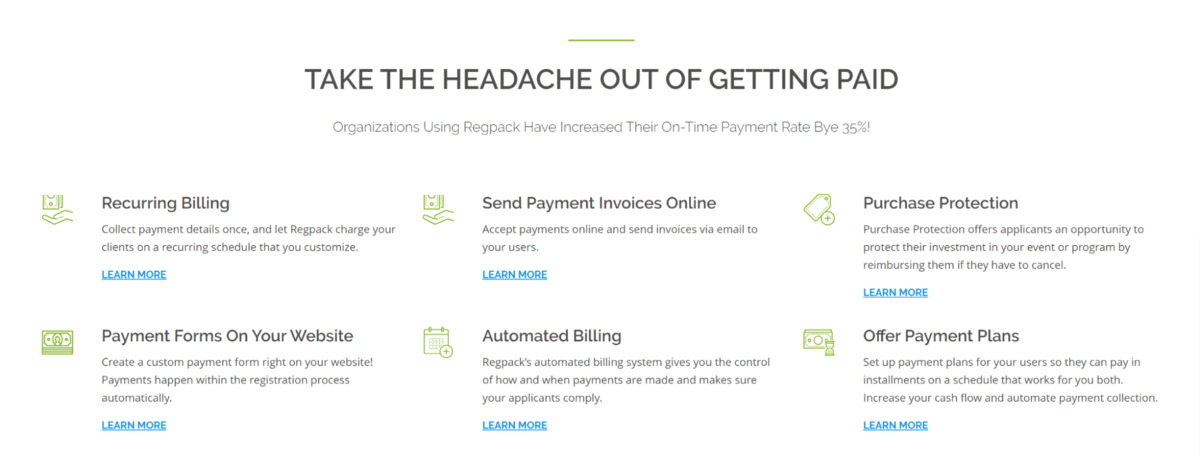
Source: Regpack
Alongside enabling buyers to review and select (all online) the payment plans you’ve created, Regpack also allows them to make online payments with a variety of payment methods—card, ACH transfer, PayPal, etc.
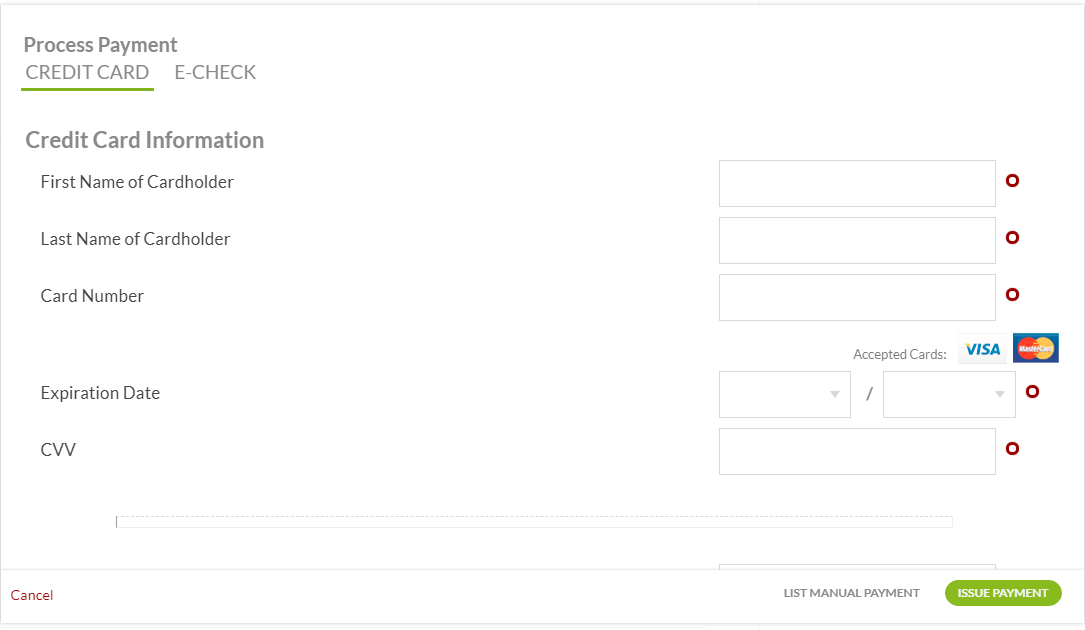
Source: Regpack
Customers can also sign up for autopay. And, after making a purchase, they’ll gain access to an online user portal where they can track their outstanding and completed payments.
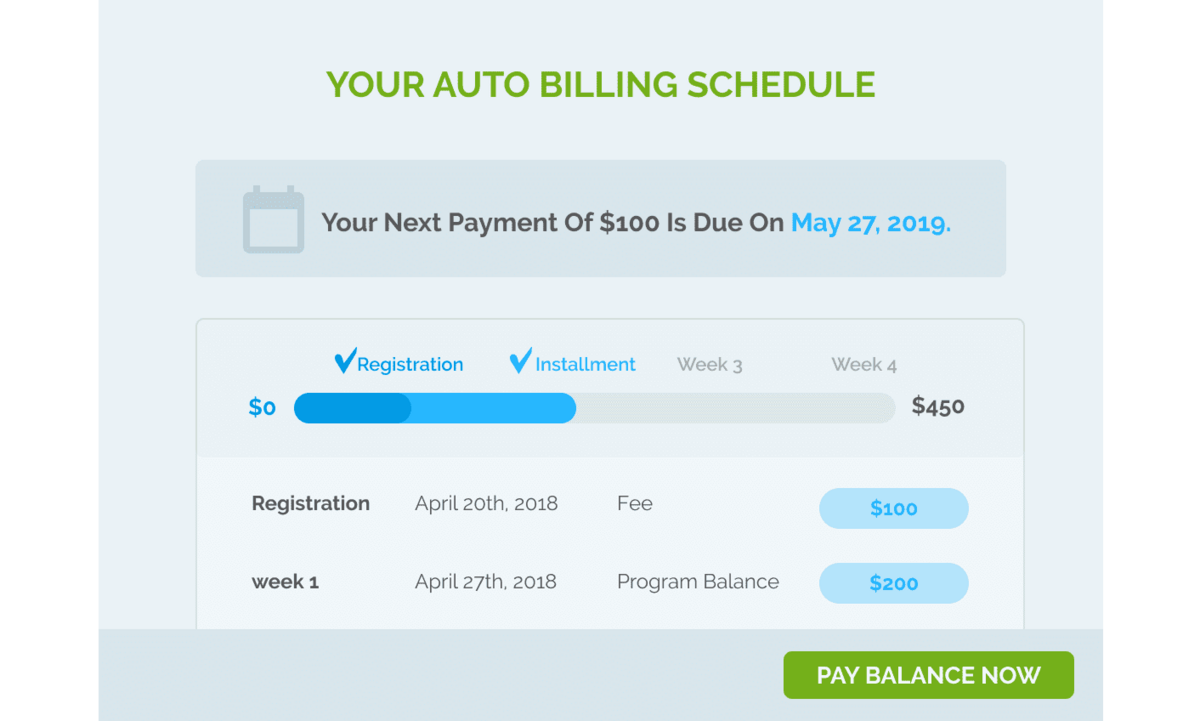
Source: Regpack
Using a tool to manage your payment plans, recurring billing, and online payments doesn’t just streamline the payment process for the customers. It helps you as well.
With automation features like auto invoicing, customers will receive a personalized invoice in their inbox immediately after making a payment. Once it’s configured, you don’t have to lift a finger.
This “set it and forget it” functionality applies to email communication, payment reminders, and even payment reporting, and will save your business a significant amount of time.
How to Provide a Great Payment Plan Experience
There are some best practices to follow to give customers the most seamless and frictionless experience possible when using one of your payment plans.
| Call attention to payment terms. | Setting expectations early about payments will ensure that fewer customers feel like they’ve been swindled later on. Explain the terms to them in person, if possible, and also put it on your website during checkout. |
| Accept multiple payment methods. | E-wallet, credit card, debit card, e-check—different customers prefer different payment methods. Meet their expectations by offering the most popular ones. |
| Offer an autopay option. | At checkout, provide customers with the option to make these recurring payments painless, occurring on the due dates automatically. |
| Create more than one plan. | Some customers might like monthly installments, but others might want to get it over with two larger payments. Provide flexibility by offering several payment plans. |
The recurring theme among these tips is to offer payment flexibility—flexibility in payment frequency, payment methods, payment automations, and more.
If you implement payment plans successfully, each customer should feel like they’re getting a payment plan made just for them.
What to Do if a Customer Misses a Payment
If a customer misses a payment, assume it was an accident and send them a friendly payment reminder email a day or two after the missed due date.
This email should include the following:
| The amount owed |
| The payment due date they missed |
| The service associated with the payment |
| The available payment options |
Usually, all they needed was a reminder, so you should see the payment go through after they open the email.
If they still don’t make the payment, you can increase urgency in other emails by mentioning the date the payment will go into collections (this hurts credit score) and any late fees they’ll incur.
We’ve written an entire guide on how to write a late payment letter that should help you navigate this process and get the money you’re owed without damaging the relationship.
We recommend checking it out.
Also, if you’re using recurring billing software, you can likely set up automated and personalized late payment emails to go out to customers.
This makes the process a lot easier.
Conclusion
Offering customer payment plans is a great way to increase sales and create long-lasting relationships with customers. And it doesn’t have to be difficult.
Creating and offering these plans and tracking and collecting customer payments is easy with the right online payment software.
For more ways to increase revenue and reduce churn, check out our guide on 5 ways to improve the customer payment experience.


















